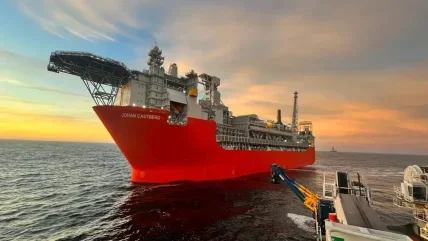
Equinor Energy and Vår Energi have announced that the floating production, storage, and offloading vessel (FPSO) linked to the Johan Castberg field is now securely anchored in the Barents Sea.
Preparations are ongoing for production start-up, which is planned for Q4 2024. The process of hooking up the FPSO to the subsea facilities, in preparation for production towards the end of the year, will now commence.
Equinor project management control senior vice president Trond Bokn said: “This is an important milestone for Equinor and its partners Vår Energi and Petoro. Johan Castberg strengthens Norway’s role as a reliable, long-term energy supplier. The field will create great value for society, and long-term ripple effects and jobs.”
The Johan Castberg oil field has estimated recoverable volumes ranging between 450 and 650 million barrels. The field is expected to have a production lifespan of 30 years, with peak production potentially reaching 220,000 barrels per day.
The development plan for the field includes 30 wells spread across 10 subsea templates and two satellites, all of which will now be connected to the FPSO. To date, 13 of these wells have been drilled, with drilling activities set to continue until 2026.
The Johan Castberg field is situated approximately 100km northwest of the Snøhvit field, at a depth of 370m. It comprises three discoveries, Skrugard, Havis, and Drivis, which were made between 2011 and 2013.
The FPSO for Johan Castberg measures 313m in length, 55m in width, and 120m in height, with a design storage capacity of 1.1 million barrels of oil.
Equinor operates the Johan Castberg field with a 50% stake, while Vår Energi holds a 30% interest, and Petoro holds the remaining 20%.
The Norwegian Parliament approved the development plan for the Johan Castberg offshore field in June 2018, with initial production expected in 2022. However, the project has faced delays and increased costs due to market conditions, higher expenses for marine operations, drilling, and the impact of Covid-19 restrictions.
In 2023, Equinor Energy, Vår Energi, and Petoro raised the investment estimate for the project by nearly NOK13bn ($1.2bn) to NOK80bn ($7.55bn), due to expanded work along with rising costs.
When the plan was first submitted in 2017, the cost was estimated at NOK57bn ($5.3bn). Costs have since increased by NOK15.5bn ($1.46bn), plus a currency impact of over NOK7bn ($660m).






